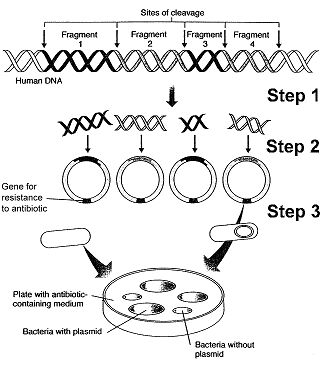Through what structure(s) do plants obtain most of their water?
A) roots
B) interior cells
C) stomata
D) leaves
A
You might also like to view...
What process or enzyme was used for Step 1 in the accompanying figure?

a. PCR
b. a bacteriophage
c. a reverse transcriptase
d. a DNA ligase
e. a restriction enzyme
Electron microscopes have an advantage over light microscopes because
a. electron microscopes allow the viewer to examine living cells. b. electron microscopes have a larger objective aperture. c. electron microscopes are easier to use. d. the wavelength of electrons is shorter than that of light.
Caddisflies are insects that lay their eggs on the bottom of streams. The eggs mature into larvae, and eventually the larvae pupate, move to the surface of the stream, shed their pupal membranes, and emerge as winged adults. Caddisflies demonstrate
A) incomplete metamorphosis. B) complete metamorphosis. C) alteration of generations.
Which of these provides a non-specific cellular immunity?
a) macrophages b) T lymphocytes c) B lymphocytes d) memory B cells e) b & c